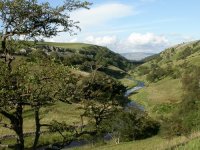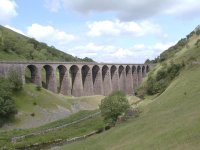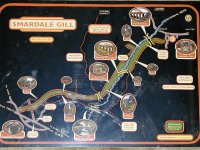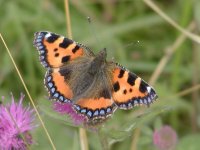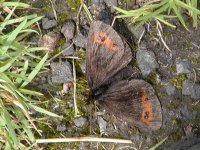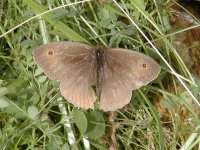Smardale Gill National Nature Reserve, near Kirkby Stephen
Whenever I visit my family in Cumbria, I love to bird this beautiful scenic walk. This is a write up I did for my own website.
Smardale Gill National Nature Reserve
This nature reserve is about 100 acres in size and occupies a 3.3 mile stretch of the disused Tebay to Darlington railway line, and is located east of the Lake District, near Kirkby Stephen. It is maintained by the Cumbria Wildlife Trust and has been designated as a Site of Special Scientific Interest (SSSI) due to the abundance of flora and fauna. Many wildflowers, including several species of orchids, some rare species of butterfly, red squirrels and lots of birdlife, can be found here.
The reserve is best accessed from the northern end, off the A685, about 1 mile south of Kirkby Stephen. Turn north at the sign for Smardale, and keep following signs to Smardale, crossing the Settle-Carlisle railway, followed by the disused railway, keeping left, until you come to a small parking area on the left, by an old railway bridge. Warning - this is a single lane road with very few passing places!!
The first section of the reserve is quite heavily wooded and the first birds we saw were an adult spotted flycatcher, feeding a fledgling, followed by black-billed magpies, wood pigeons and chaffinches. Willow warblers and wrens were singing everywhere and we had some good sightings. As we continued along the route of the old railway track the trees had been cleared on the right to encourage butterflies and we were able to see a Eurasian jay and common buzzard across the valley. In the trees around us we had great tits, coal tits and goldcrests, with a dunnock on the path.
As the path approaches the Smardale Gill Viaduct, the vista opens up and the reserve changes to open rolling countryside typical of the limestone geology of the area. The viaduct, spanning Scandal Beck, was built of local red sandstone in 1860, but after the railway line was closed in 1962, it fell into disrepair. By the late 1980's it had become dangerous, but was renovated in 1990 by the Northern Viaduct Trust. There were 2 Eurasian kestrels flying over Smardale Fell, and on a previous visit in 1998 we had watched a family of 4 kestrels practising their hunting skills on the fellside. Several common swifts were swooping about, 2 carrion crows were working the area and a grey heron flew up from Scandal Beck below.
In the trees beyond the viaduct we found a Eurasian treecreeper, common redstart, European robin and blackbird. Then a little further along there are some old limestone kilns and a disused quarry. Here a family of Eurasian jackdaws had a nested in an old tree growing high up on the quarry face. Barn swallows skimmed past us, and a family of 6 blue tits worked over the bushes around the derelict cottage nearby.
Rather than continue the whole length of the old railway, we doubled back at the intersection with the Coast to Coast Walk. Here we watched a European goldfinch feeding on thistle heads, and meadow pipits could be seen rising up calling "tissip" and doing their "parachute display". The path then descends to the drover's bridge over Scandal Beck, where we saw a pair each of grey and pied wagtails, flycatching over the beck, with lots of swifts and several house martins. Instead of following the path up and over the moor top and back to Smardale Hall, as we usually do, we followed the path just above Scandal Beck which brought us back to the Viaduct, where we could see 2 old nests on ledges under the arches - possibly ravens. En route we watched a northern wheatear, perched on the rocky outcrops of limestone, plus a mistle thrush feeding on the hillside.
We drove home via a minor road parallelling the A685 to Tebay - this takes you over Orton and Grange Scars to Sunbiggin Tarn, a small lake with a boggy, marshy area surrounding it. We stopped here to check out the area from the road, as there are No Trespassing signs around the tarn, and saw 12 more species. Oystercatcher, skylark, 14 greylag geese, 20 Eurasian coots, 12 northern lapwings, common redshank, 6 tufted ducks, little grebe, herring gull, Eurasian curlew, a nesting colony of black-headed gulls and a large flock of starlings.
42 species for the day
See my post below for a photo of the area.
Whenever I visit my family in Cumbria, I love to bird this beautiful scenic walk. This is a write up I did for my own website.
Smardale Gill National Nature Reserve
This nature reserve is about 100 acres in size and occupies a 3.3 mile stretch of the disused Tebay to Darlington railway line, and is located east of the Lake District, near Kirkby Stephen. It is maintained by the Cumbria Wildlife Trust and has been designated as a Site of Special Scientific Interest (SSSI) due to the abundance of flora and fauna. Many wildflowers, including several species of orchids, some rare species of butterfly, red squirrels and lots of birdlife, can be found here.
The reserve is best accessed from the northern end, off the A685, about 1 mile south of Kirkby Stephen. Turn north at the sign for Smardale, and keep following signs to Smardale, crossing the Settle-Carlisle railway, followed by the disused railway, keeping left, until you come to a small parking area on the left, by an old railway bridge. Warning - this is a single lane road with very few passing places!!
The first section of the reserve is quite heavily wooded and the first birds we saw were an adult spotted flycatcher, feeding a fledgling, followed by black-billed magpies, wood pigeons and chaffinches. Willow warblers and wrens were singing everywhere and we had some good sightings. As we continued along the route of the old railway track the trees had been cleared on the right to encourage butterflies and we were able to see a Eurasian jay and common buzzard across the valley. In the trees around us we had great tits, coal tits and goldcrests, with a dunnock on the path.
As the path approaches the Smardale Gill Viaduct, the vista opens up and the reserve changes to open rolling countryside typical of the limestone geology of the area. The viaduct, spanning Scandal Beck, was built of local red sandstone in 1860, but after the railway line was closed in 1962, it fell into disrepair. By the late 1980's it had become dangerous, but was renovated in 1990 by the Northern Viaduct Trust. There were 2 Eurasian kestrels flying over Smardale Fell, and on a previous visit in 1998 we had watched a family of 4 kestrels practising their hunting skills on the fellside. Several common swifts were swooping about, 2 carrion crows were working the area and a grey heron flew up from Scandal Beck below.
In the trees beyond the viaduct we found a Eurasian treecreeper, common redstart, European robin and blackbird. Then a little further along there are some old limestone kilns and a disused quarry. Here a family of Eurasian jackdaws had a nested in an old tree growing high up on the quarry face. Barn swallows skimmed past us, and a family of 6 blue tits worked over the bushes around the derelict cottage nearby.
Rather than continue the whole length of the old railway, we doubled back at the intersection with the Coast to Coast Walk. Here we watched a European goldfinch feeding on thistle heads, and meadow pipits could be seen rising up calling "tissip" and doing their "parachute display". The path then descends to the drover's bridge over Scandal Beck, where we saw a pair each of grey and pied wagtails, flycatching over the beck, with lots of swifts and several house martins. Instead of following the path up and over the moor top and back to Smardale Hall, as we usually do, we followed the path just above Scandal Beck which brought us back to the Viaduct, where we could see 2 old nests on ledges under the arches - possibly ravens. En route we watched a northern wheatear, perched on the rocky outcrops of limestone, plus a mistle thrush feeding on the hillside.
We drove home via a minor road parallelling the A685 to Tebay - this takes you over Orton and Grange Scars to Sunbiggin Tarn, a small lake with a boggy, marshy area surrounding it. We stopped here to check out the area from the road, as there are No Trespassing signs around the tarn, and saw 12 more species. Oystercatcher, skylark, 14 greylag geese, 20 Eurasian coots, 12 northern lapwings, common redshank, 6 tufted ducks, little grebe, herring gull, Eurasian curlew, a nesting colony of black-headed gulls and a large flock of starlings.
42 species for the day
See my post below for a photo of the area.
Last edited:




